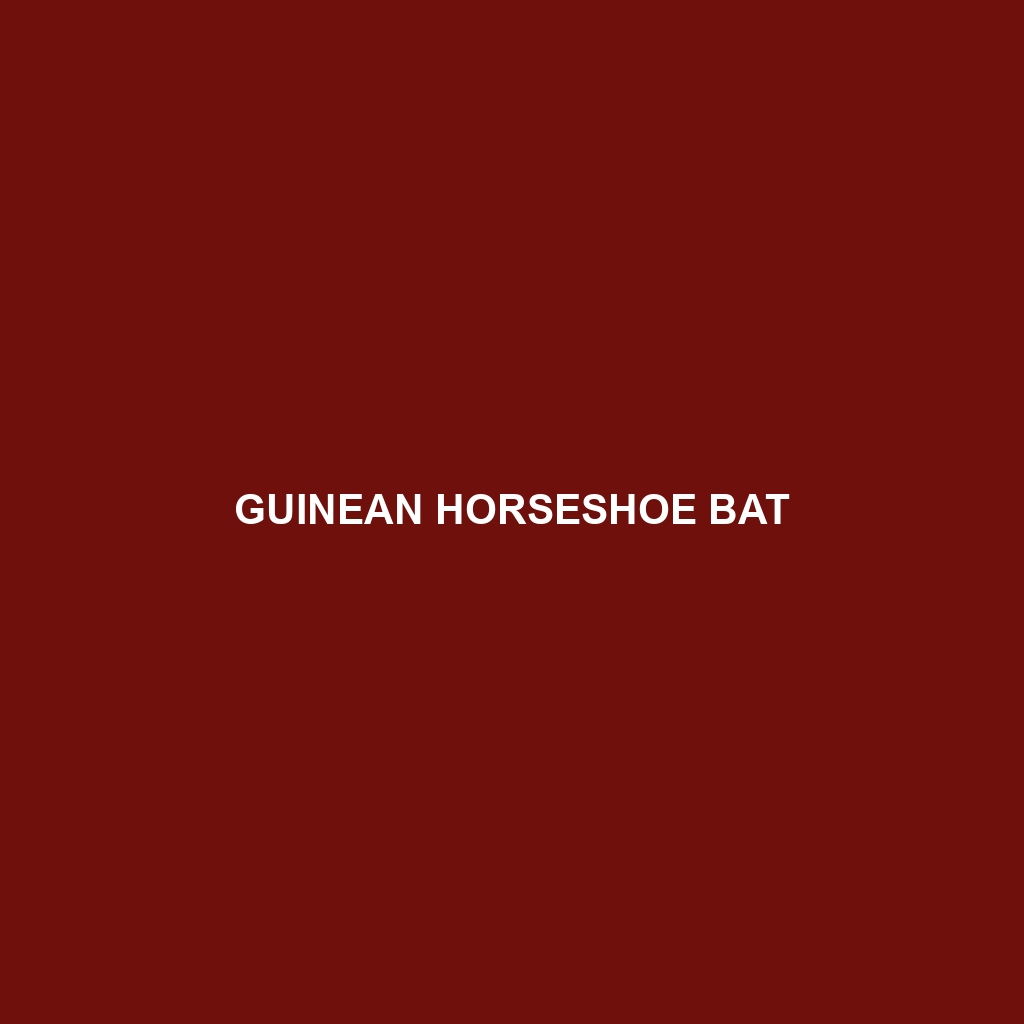Common Name: Rüppell’s Horseshoe Bat
Scientific Name: Rhinolophus ruppelli
Habitat:
Rüppell’s Horseshoe Bat is primarily found in a variety of habitats across parts of Africa and the Middle East, particularly in countries such as Ethiopia, Sudan, and parts of Saudi Arabia. This species typically inhabits forested areas, savannas, and sometimes urban settings, where it seeks roosting sites in caves, abandoned buildings, and dense foliage.
Physical Characteristics:
This bat species averages a wingspan of about 30 to 35 centimeters and weighs approximately 8 to 15 grams. Its fur is usually dark brown to gray, featuring a distinctive horseshoe-shaped nose leaf that is characteristic of the Rhinolophidae family. The elongated ears and rounded body shape further distinguish Rüppell’s Horseshoe Bat from other bat species, aiding in its echolocation abilities.
Behavior:
Rüppell’s Horseshoe Bat exhibits nocturnal behavior, primarily emerging at dusk to forage for food. It roosts in small colonies and showcases unique flight patterns, often darting and swooping to catch insects in mid-air. Social interactions are common within roosting groups, where grooming and vocalizations play a key role in bonding.
Diet:
This species primarily feeds on a variety of nocturnal insects, including moths and beetles. Rüppell’s Horseshoe Bat utilizes echolocation to locate prey, often flying at varied altitudes to adapt to the availability of food sources. Its diet is crucial for controlling insect populations in its habitat, making it an important natural pest controller.
Reproduction:
The breeding season for Rüppell’s Horseshoe Bat typically occurs in late summer, with females giving birth to a single pup after a gestation period of about 45 days. Maternal care is intense, with mothers nursing their young and teaching them to forage as they grow. Pups are often weaned around five weeks of age and begin to fly shortly thereafter.
Conservation Status:
Currently, Rüppell’s Horseshoe Bat is classified as vulnerable according to the IUCN Red List. Factors contributing to its threatened status include habitat loss due to deforestation and urban development, as well as the use of pesticides that diminish insect populations.
Interesting Facts:
Rüppell’s Horseshoe Bat has a remarkable ability to navigate and hunt in total darkness, using its sophisticated echolocation system. Additionally, this species is known for its striking appearance, featuring a unique nose leaf that serves both an aesthetic and functional purpose in its hunting techniques.
Role in Ecosystem:
As a key predator of insects, Rüppell’s Horseshoe Bat plays a vital role in maintaining the ecological balance within its habitat. By controlling insect populations, it supports agricultural systems and helps to preserve other flora and fauna by preventing pest outbreaks. This bat’s interactions with both insects and plants underline its importance in ecological health and biodiversity.
